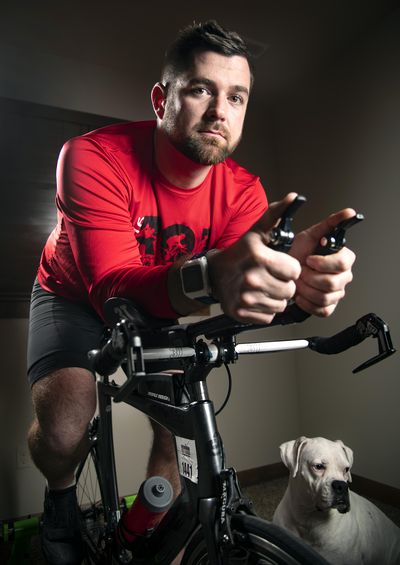Living to ride: Peter Hagen transformed into endurance athlete after diabetes diagnosis

Peter Hagen knew something was wrong.
Anxiety attacks would hit him out of nowhere. He was thirsty all the time. When his wife was pregnant, he had to go to the bathroom more often than she did.
His doctor prescribed an antidepressant, but Hagen quit taking it after a few months.
Then a routine life insurance physical revealed the truth. Hagen had diabetes.
“My body was pumping really thick, sugary blood,” he said. “I was originally diagnosed with Type 2 diabetes, but I didn’t believe that.”
His instincts were right. It was much worse. Further testing showed he had Type 1 Diabetes, an autoimmune disorder in which the body does not produce insulin on its own.
He was 29, a new father and a busy real estate broker. Living with the disease means closely monitoring his blood glucose levels, counting carbs and taking insulin whenever necessary.
“When I was first diagnosed, there was a honeymoon period while I got control of diabetes, but over time, the honeymoon fades away and you become insulin totally dependent,” said Hagen.
The consequences of not monitoring his blood glucose or managing his carbs could result in serious complications like organ failure.
It was a lot for Hagen to process. He withdrew.
“When I started feeling sorry for myself, the people at Benaroya Research Institute said I should volunteer at Camp Stix.”
Benaroya is a nonprofit autoimmune disease research institute affiliated with Virginia Mason Health System in Seattle where Hagen receives medical care.
Three years ago, he volunteered at Camp Stix, a summer camp for kids with diabetes, hosted locally at Camp Reed.
“It literally changed my life,” Hagen said. “I got a totally new perspective from being with kids who were not only living with the disease, but thriving with it. I went from isolation to finding a community.”
At the camp, he met the guest speaker, professional snowboarder Sean Busby, who also has diabetes.
“He founded ROI, Riding on Insulin, an endurance race team that raises money to send kids with diabetes to camp,” Hagen said.
Busby invited Hagen to join the team.
Since joining the Riding on Insulin race team, he’s completed two half-marathons, two half Ironmans, several 10k runs and a few smaller triathlons.
Technology has made his active lifestyle manageable.
Hagen wears a Dexcom G6 continuous glucose monitoring device that allows him to track his blood glucose levels in real-time. A small sensor placed on his lower abdomen continuously sends his glucose levels to his smartphone and smartwatch, so he can closely monitor his numbers. A subcutaneous insulin pump transmits insulin when needed.
Ideally, the continuous monitoring means no daily injections or finger pricks.
“I just check my phone,” Hagen said. “But I still prick my finger occasionally – technology isn’t foolproof.”
The mobile system has built-in alerts and alarms that proactively notify him before his blood glucose reaches potentially dangerous levels. His wife also receives the alerts on her phone.
“If I’m on a run or training, she can get the alerts. It’s peace of mind,” he said. “I started to feel normal again. You forget what normal was.”
Until last year, he’d never considered competing in an Ironman race. For one thing, he didn’t know how to swim. But when several of his ROI teammates mentioned the Coeur d’Alene half Ironman, he decided to dive in.
“I learned how to swim last year at the Y,” he said. “The following month I did the Coeur d’Alene half Ironman. That was a fun race. Three other people with T1D from ROI ran it with me.”
When asked how he did, Hagen smiled.
“I finished.”
He said he doesn’t expect to see a cure for T1D in his lifetime, so he’d rather raise funds to help kids find the supportive community he’s found. He uses the races to raise money to send kids to Riding on Insulin camps, and last year, he became a coach for the organization’s ski camps, volunteering at camps in Montana and in Pennsylvania.
Camp can be expensive and so is living with diabetes.
“The meds and the pumps are incredibly expensive,” he said.
And even with technological bells and whistles, managing Type 1 diabetes takes concentrated effort. He can’t eat without taking insulin and exercise typically requires four hours of planning.
Still, Hagen, 34, said, “Diabetes doesn’t determine who I am. It doesn’t mean I can’t do something I want to do.”
That’s why he chose “doabetic” for his Instagram handle.
He grinned.
“I plan on being a grandfather some day.”